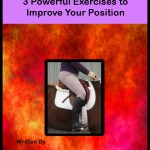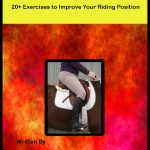Horse Training – Have a STAR plan for your horse training
If you are a rider then you you have dealt with having to train a horse. It may be something simple such as walking correctly while being lead or it may be upper level dressage. Either way horse training comes into the picture.
We often come into resistance and what we would call disobedience while horse training. If you actually do a bit of searching you may find your horse is not really disobedient but rather is trying to tell you something or maybe even trained to do – what ever it is which you think is the disobedience. Your horse could be scared, spooked, or may not understand what it is you are asking. To make sure that he’s not just spooked, alarmed, perturbed or confused take a moment to asses the situation.
Take the STAR approach.
- Situation – What is the situation you are in. For example my horse was – refusing to go by the in gate. This is the Who/What/Where/When of the situation. Focus on the ‘problem’ you had. Who was riding, was it in training, at a show, on the trail etc.
- Task – Identify the objective. This is key. The fundamental issue you need to overcome. Your horse may be stopping at the ingate (as in the example above), but what is the fundamental issue? Is the horse herd bound, is the horse not listening or reacting to the riders cues? Is the rider not asking correctly?
- Action – This is where you describe the action taken to correct the situation.
- Results – What was the result of the action taken?
If you spend some thoughtful time on the situation and the action the results will usually speak for themselves.
Balance the Correction

Sometimes, the horse may be trying to find out who really is IN CHARGE. Remember horses are herd animals and will look for their leader. Some horses will often try to be the ‘herd leader’. Make your corrections in balance with the horse.
Make your corrections POSITIVE, FIRM, CONSISTENT AND GENTLE.
I had a horse which would run through the doorway and almost crush me. Correcting her by stopping through the door would just cause more anxiety and crushing.
Using the STAR approach –
- Situation – Leading her through a doorway she scooted and crushed me.
- Task – Is to get her to go calmly through a doorway without crushing the person leading her.
- Action – I backed her through the doorway rather than leading her through the doorway.
- Result – She now goes through the doorway calmly (in both directions!).
If you are having similar situations. Take a breather and take some time to get a STAR approach on them.
What situations would you use this simple step by step procedure in your regular riding program to help you and your horse?
Here are some other posts you may find helpful;
- Horse Training – How to correct a horse which is dead to the legs
- Getting Show Ring Ready – Know the rules
- Horse Training – Reward your horse for trying …

 Try these three powerful exercises to get strengthen your position.
Try these three powerful exercises to get strengthen your position.
